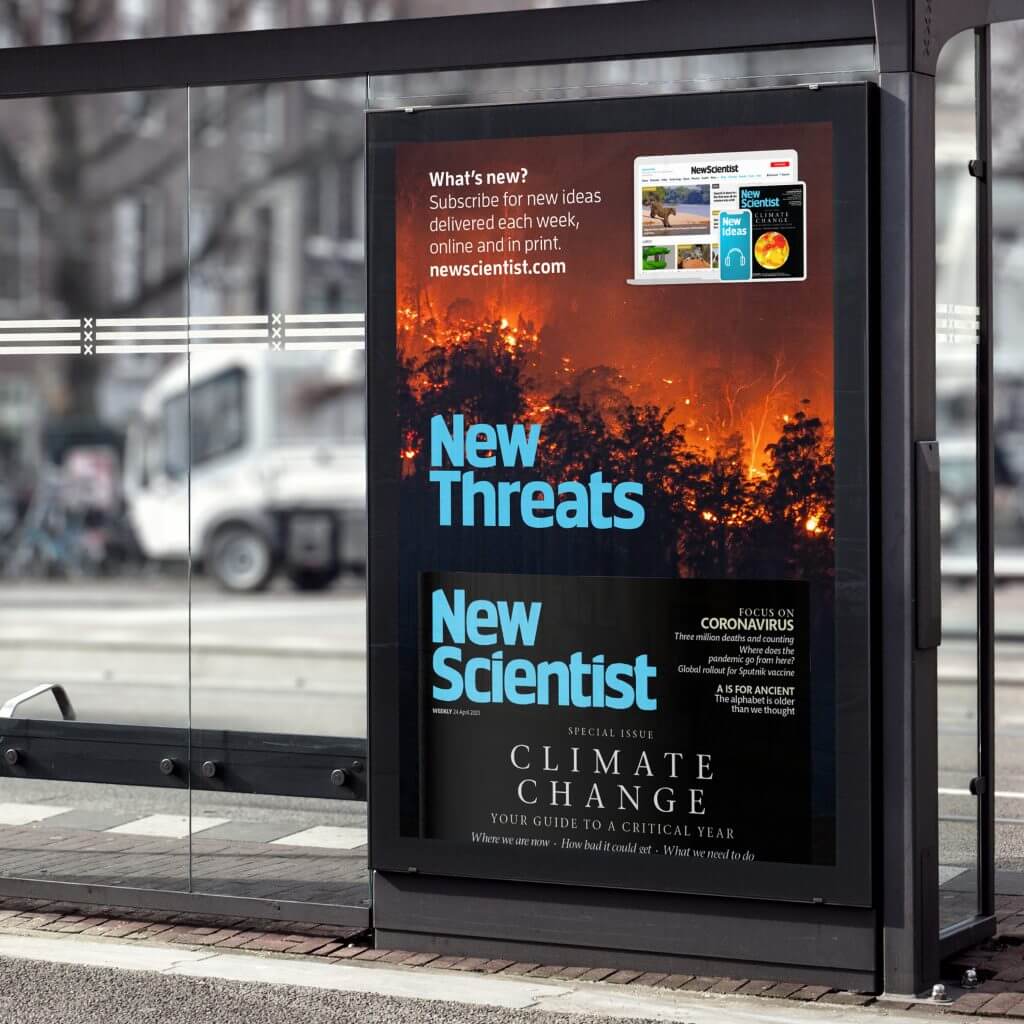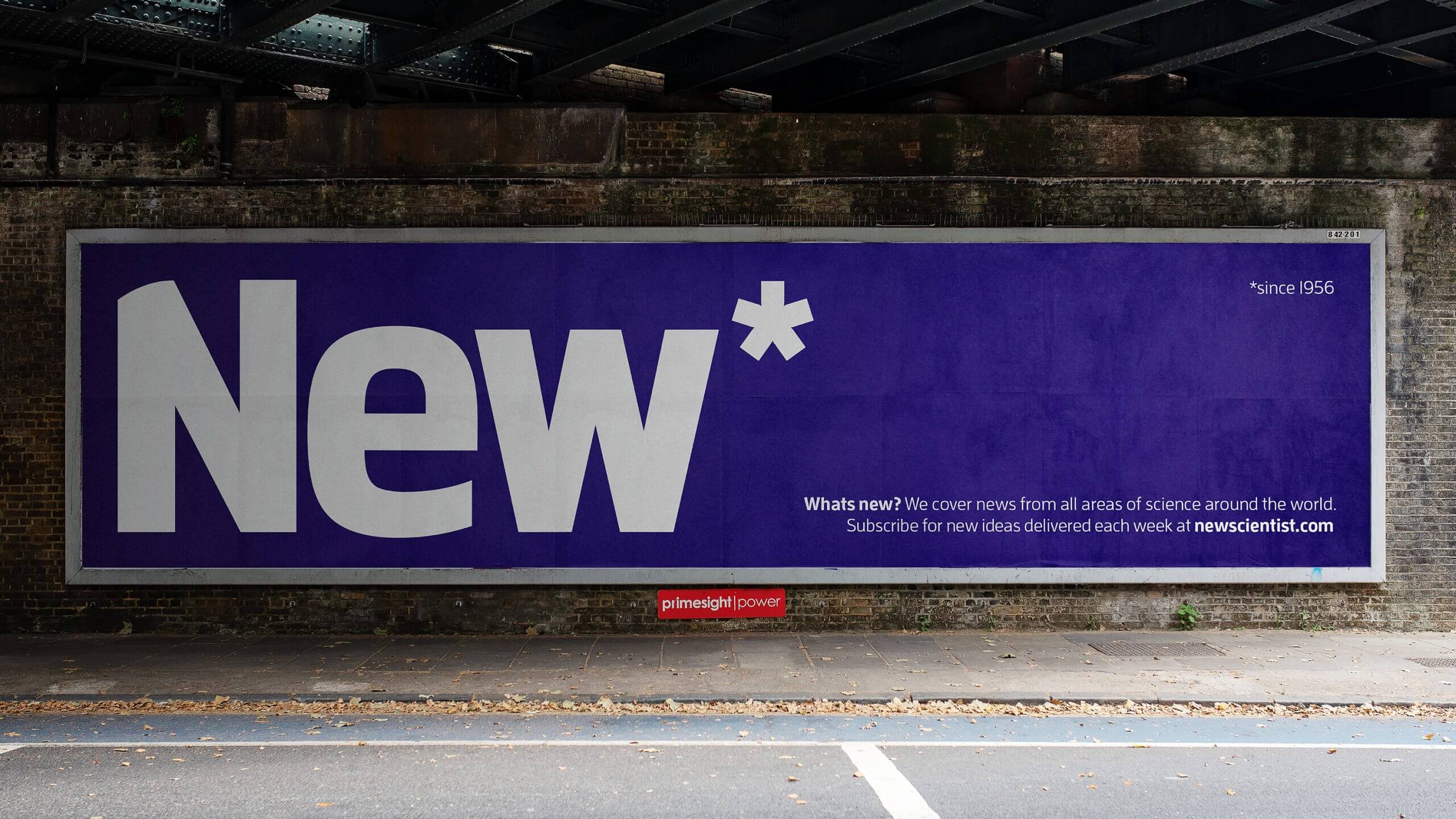New Scientist
Helping a vast US audience to believe in the power of the new.
How does a media icon with over 60 years of history communicate its cutting edge credentials? By celebrating the spirit of discovery at the heart of its brand.
Sector
Media & Publishing
What we did
Discovery & Definition
- Audits
- Consultation
- Interviews
- Brand proposition
Design Development
- Creative concepts
- Messaging and tone of voice
- Brand expression
- Campaign communications
- Campaign identity
- Content creation
- Digital expression
- Art direction
Delivery
- Brand guidelines
- Brand toolkits
- Brand activation
- Motion design and video
Context
First published as a printed journal in 1956, New Scientist now spans digital editions, an online learning platform, video channels and podcasts. With a long established international reputation for scientific excellence and cutting edge content, New Scientist spotted an opportunity to grow its US reach in 2022, appointing the Baxter & Bailey team to devise a compelling creative campaign to introduce the brand to a new audience of American devotees.
The team at Baxter & Bailey has worked with us on a number of significant campaigns. Our collaborations are always professional, enjoyable and super-creative. This US campaign is no exception.
Solution
Our concept was to celebrate New Scientist’s unique ability to shine a light on all that’s new in the world of science: new breakthroughs, new discoveries, new ideas (an idea so fundamental to the brand that it forms part of its name). Working with digital marketing experts RocketMill and animator ace Tom Matuszewski, we used simple messaging, striking imagery and immersive video to communicate the peerless scientific depth and breadth of the brand.
Impact
This singular, direct and endlessly adaptable campaign was rolled out across social channels, on paid digital advertising and featured in sister publications, successfully raising awareness, attracting new subscribers and encouraging stateside readers to discover something new.


Awards
Special Thanks
Thanks to Laurence, Jo and James and the wider US team at New Scientist for believing in ‘the power of the new’ and how a simple idea can translate across the Atlantic without losing impact or integrity.